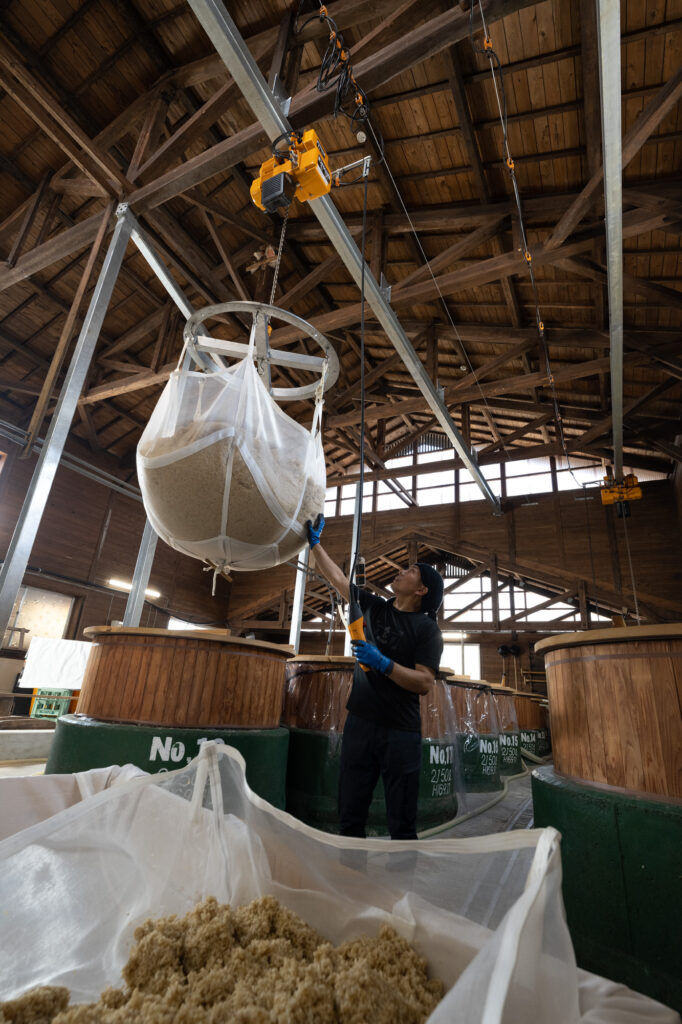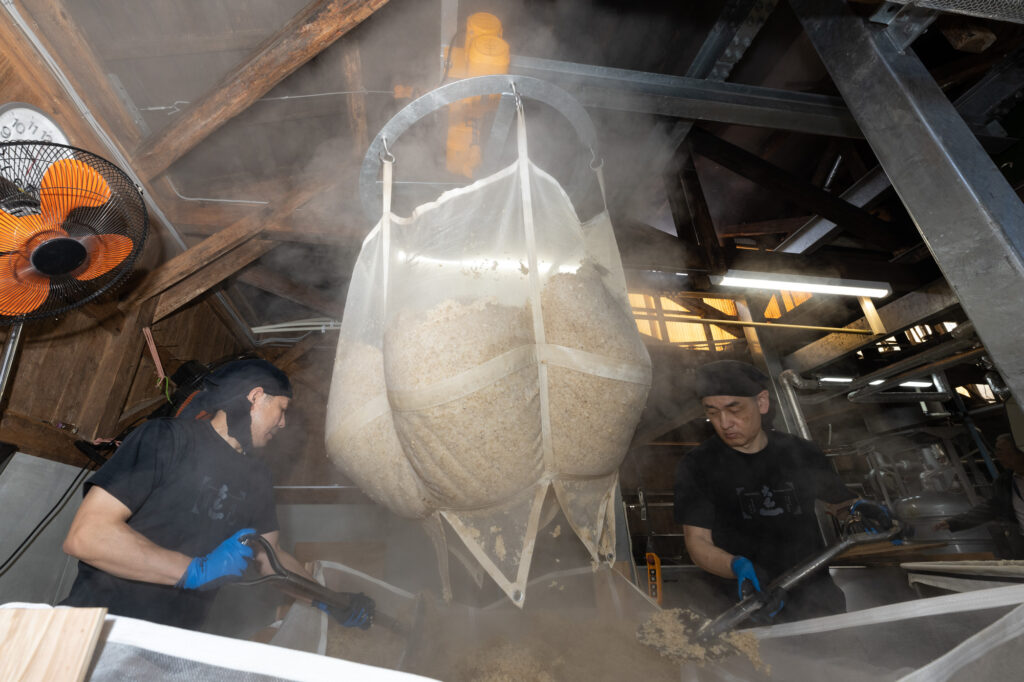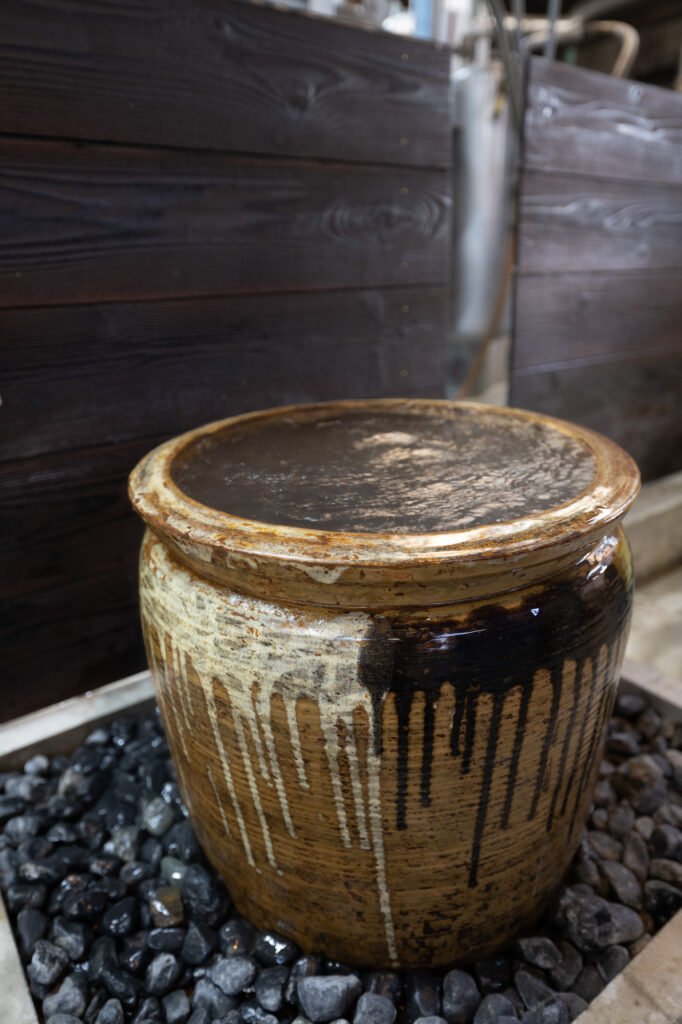Jan. 24.2024
From Flood Disaster to Finest Shochu
Yamatoichi Brewery, in the city of Hitoyoshi in Kumamoto Prefecture, began in 1898. We spoke with President Fumihito Shimoda, who explores traditional methods for making premium sake.

Blessed by the Kumagawa
Kuma shochu is a delicacy of the rich rice-farming region along the Kumagawa, enjoying a history of 500 years. In the Meiji era in the late 19th century a massproduction system using artificially cultured yeast was established, but I’m not aware of anyone who really knows the brewing methods before that. I was a high-school history teacher before inheriting the brewery, so my curiosity drove me to immerse myself in old documents. Based on what I discovered in that research I embraced the challenge of using brown rice instead of white rice as the main ingredient to produce sake, using natural yeast cultures. In the middle of that effort, in July 2020, a severe rainstorm hit that was a disaster for us. Our cellar was flooded with up to three meters of storm water, destroying 80% of our unprocessed sake. But it occurred to me that the flood must have brought a lot of natural yeast from the river into the cellar. So I decided to try using that for a new sake production, and after repeated trial and error we succeeded. I don’t think we’ve found the best answer yet, though. Believing we can make better sake, I’m continuing to address this challenge.

Hoists introduced after the flood
We had a machine to carry our steamed rice upward, but it was destroyed in the flood. So I thought about other ways to hoist it from above that would not be affected by another flood. Using a government disaster-recovery grant, I bought a hoist. It made our operation much easier, because we had been very busy brewing and cleaning up simultaneously. We ordered more, and currently use three hoists. With our low-ceiling cellar, the compactness of the Kito hoist was my deciding factor.



